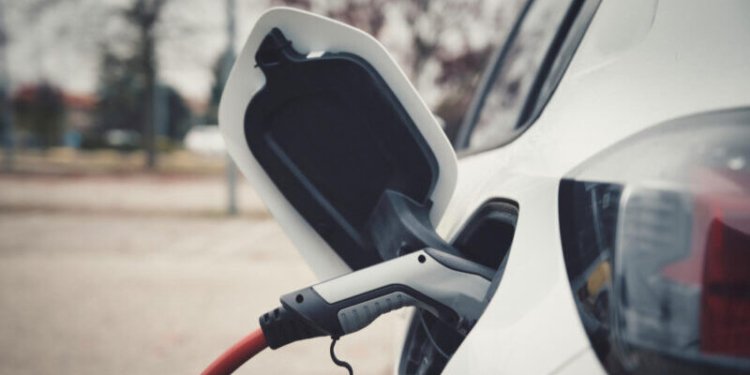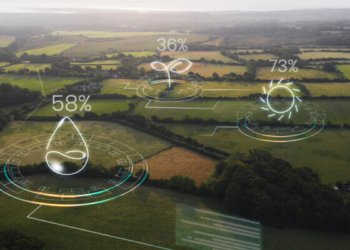Cities are evolving, and so are the methods of transportation. Since transportation is a significant contributor to greenhouse gas emissions, discovering sustainable options is pressing. This article examines different transportation alternatives that lower pollution while enhancing community health and equality. By adopting greener practices, we can foster a healthier environment and a more promising future for urban mobility. Here’s an overview of these encouraging solutions.
The Importance of Sustainable Transportation Solutions
Sustainable transportation solutions offer numerous benefits to urban environments, greatly enhancing community wellbeing. By promoting walking and biking through bike lanes and bike-share programs, they reduce greenhouse gas emissions and improve air quality, leading to better health for residents. Public transportation and mass transit systems also decrease travel time and fuel costs while making commuting more accessible, fostering social equity.
Compared to traditional methods, sustainable transport significantly lowers environmental impact through reduced fuel consumption and carbon emissions, supporting long-term viability amid climate change. The transport sector’s shift toward electric vehicles, hybrid electric vehicles, and alternative-fuel vehicles, including biofuels and electric trucks, showcases potential for green growth.
Technology integration, such as traffic data analysis and fast charging stations, enhances the effectiveness of these transport systems by optimizing routes and improving energy efficiency. However, challenges like the need for substantial infrastructure upgrades and financial incentives for adoption can hinder implementation.
Current Trends in Urban Mobility
Innovations in urban mobility are changing transportation systems, promoting sustainability and reducing greenhouse gas emissions. Cities are implementing bike lanes and expanding bike-share programs to encourage cycling and active transportation. Ride-share services are becoming more popular, making commuting convenient while easing the environmental impact of private vehicles.
Transportation planners are focusing on clean energy solutions, integrating electric vehicles, including hybrid electric vehicles and electric trucks, into public transportation. These efforts are supported by incentives to encourage the use of alternative-fuel vehicles like biofuels. The bipartisan infrastructure law backs the development of faster charging stations and advancements in power generation that rely on renewable energy. Furthermore, cities are exploring mass transit options and high-speed rail to enhance efficiency and improve travel time.
The aviation sector is also examining solutions for maritime decarbonization, recognizing its importance in the transport sector. By analyzing traffic patterns and employing traffic data, urban corridors are evolving to support low-carbon logistics in freight transportation, assisting in addressing the climate crisis and facilitating green growth.
Electric Vehicles and Their Impact on Urban Transportation
Electric vehicles significantly influence urban traffic patterns and congestion levels in cities by promoting a shift towards sustainable transportation. With the rise of electric trucks and ride-share services, urban areas can experience reduced fuel consumption and greenhouse gas emissions. Electric vehicles, along with hybrid electric vehicles, support climate change mitigation efforts by lessening the environmental impact associated with traditional vehicles.
These vehicles harness alternative fuels and renewable energy, which further enhances their benefits. Moreover, as cities expand bike lanes and bike-share programs, the focus shifts towards active transportation, allowing for improved mobility and reduced travel time. Transportation planners can analyze traffic data to optimize urban corridors for better efficiency.
However, the transition to electric vehicles also presents challenges, particularly regarding the integration with existing public transportation systems, which may require new fast charging stations and upgrades to accommodate growing electric fleets.
Additionally, the bipartisan infrastructure law aims to support such changes, ensuring that the supply chain for batteries and maintenance of electric vehicles aligns with green growth objectives while addressing the climate crisis and freight transportation needs.
Public Transit Innovations
Integration of Clean Energy in Public Transit Systems
Integrating clean energy into public transit systems reduces urban carbon emissions and improves air quality. Sustainable transportation options such as electric vehicles, hybrid electric vehicles, and biofuels help lower greenhouse gas emissions in the transport sector. By investing in public transportation, cities can encourage active transportation like walking and cycling, which further decreases fuel consumption and enhances environmental impact.
However, cities face challenges such as thehigh costs of implementing fast charging stations and the need for a robust supply chain for alternative-fuel vehicles. Transportation planners must analyze traffic data and urban corridors to identify where to best implement these solutions. Collaboration with technology providers is also important; public transit agencies can develop ride-share services and bike-share programs that promote green transportation while also encouraging the use of electric trucks and high-speed rail.
Together, these efforts contribute to addressing climate change and the ongoing climate crisis.
Examples of Successful Public Transit Models
Successful public transit models around the globe focus on improving accessibility and increasing ridership through various strategies. Many urban areas invest in bike lanes and bike-share programs to encourage cycling and walking, thereby reducing greenhouse gas emissions and fuel consumption. They also prioritize public transportation, offering ride-share services and efficient bus routes that meet local needs.
Effective transportation planners analyze traffic patterns and travel time data todesign systems that ensure easy access to necessary services and employment. Furthermore, cities increasingly adopt alternative-fuel vehicles, including electric trucks and hybrid electric vehicles, as part of their efforts to promote sustainability.
Additionally, investments in high-speed rail and maritime decarbonization support green growth initiatives while minimizing environmental impact. Proper incentives for users, such as affordable fare structures and fast charging stations for electric vehicles, encourage community involvement. By learning from these successful models, other cities can improve their transport systems, address climate change, and reduce carbon emissions while fostering sustainable transportation solutions.
Biking and Walking: Promoting Active Transportation
Cities can improve transportation options for residents by integrating biking and walking infrastructure through expanded bike lanes and safe pedestrian paths. Support for sustainable transportation comes from creating bike-share programs that enhance access, especially in urban areas. This encourages cycling while reducing carbon emissions, addressing climate issues.
The health benefits include improved fitness levels, while environmental advantages stem from reduced fuel consumption and lowergreenhouse gas emissions. Economically, better transport can reduce travel time and fuel costs, fostering community growth. Community engagement and education initiatives can raise awareness by highlighting active transportation’s benefits. Transportation planners can analyze traffic data to identify needs and promote incentives for biking and walking, encouraging a culture of green transportation.
These initiatives align with the bipartisan infrastructure law’s objectives, creating efficient transport systems that embrace alternative fuels, such as biofuels and electric vehicles. Furthermore, enhancing infrastructure supports freight transport through more efficient supply chains, encourages maritime decarbonization, and accelerates benefits from high-speed rail and electric trucks.
Sustainable Transportation Solutions and Technology
Role of Smart City Technology
Smart city technology boosts the efficiency and reliability of urban transportation systems by improving traffic patterns and minimizing travel time for various transport modes, including public transit and active options like cycling and walking. Transportation planners assess real-time traffic data to pinpoint congestion hotspots and implement smart traffic management systems that help control fuel use and decrease greenhouse gas emissions.
By promoting initiatives such as bike lanes and expanded bike-share programs, cities support cycling and walking as eco-friendly transport alternatives. Smart technologies also provide incentives for electric and hybrid vehicles, enhancing access to fast charging stations and increasing electric truck fleets.
Additionally, data analytics offer insights that refine mass transit services to align with community needs. This results in a better user experience while advancing environmental objectives, such as lowering carbon emissions and improving freight transportation efficacy. Collectively, these factors promote green growth and address climate challenges by steering the transport sector toward sustainability through a range of solutions, including renewable energy sources, biofuels, and high-speed rail projects.
Mobility as a Service (MaaS) Platforms
Mobility as a Service (MaaS) platforms facilitate the integration of different transport modes, streamlining travel in urban centers. They merge options such as public transit, cycling, and ride-hailing into a single application, making trip planning simpler and cutting down on travel time. By promoting cycling and walking, these platforms encourage sustainable transport options and active transportation.
MaaS also diminishes dependence on personal vehicles by offering access to alternative-fuel options and electric trucks, which helps to lower greenhouse gas emissions and fuel expenses. With the incorporation of traffic data, these systems can pinpoint and highlight accessible routes, tackling issues surrounding accessibility and equity. This approach enables equitable access to public transportation options, fostering environmentally friendly growth.
They can align with efforts such as the bipartisan infrastructure law, improving facilities like bike lanes and fast charging points for electric vehicles.
Incentives for Electric Vehicles Adoption
Government Policies Supporting Clean Energy Transport
Government policies, such as the bipartisan infrastructure law, support clean energy transport through funding for electric vehicles and alternative fuels. These initiatives foster sustainable transportation by investing in bike lanes, bike-share programs, and enhancing public transportation infrastructure.
Incentives offered by governments, like tax credits for hybrid electric vehicles and fast charging stations, influence consumer choices by making electric and alternative-fuel vehicles more affordable.
Additionally, expanded infrastructure for renewable energy aids in lowering fuel consumption and greenhouse gas emissions. Policies also improve public transit systems by incorporating cleaner technologies like electric trucks and biofuels into freight transportation, thereby reducing environmental impact. By boosting energy efficiency and encouraging active transportation, such as biking and walking, transportation planners can better align urban areas with sustainability objectives. This comprehensive strategy tackles the climate crisis by cutting carbon emissions in aviation and broader transport systems, contributing to green growth and a more sustainable future.
Consumer Incentives for Electric Vehicle Purchase
Consumer incentives significantly encourage the purchase of electric vehicles and promote sustainable transportation practices. Effective incentives include tax credits and rebates that lower the overall cost of buying an electric vehicle, making it more appealing for consumers in urban areas. States and regions offer varying incentives, creating disparities in adoption rates and influencing how quickly consumers transition to electric and hybrid electric vehicles.
Non-financial incentives alsogreatly impact consumer decisions. For instance, access to carpool lanes and reduced charging costs at fast charging stations can make owning an electric vehicle more attractive. These measures help lower overall travel time and support the goal of green growth by reducing greenhouse gas emissions. Transportation planners recognize that integrating alternative fuels, such as biofuels and renewable energy, is important for mitigating the environmental impact of the transport sector.
With attention to urban corridors and traffic patterns, the adaptation of policies under the bipartisan infrastructure law can enhance energy efficiency, support bike-share programs, and better facilitate active transportation methods like walking and cycling, contributing to a more sustainable transportation future.
Future Challenges in Implementing Sustainable Transport Solutions
Cities face challenges in updating their transportation systems to support sustainable transport solutions. Outdated infrastructure often lacks the necessary bike lanes and pathways for cycling and walking, which limits active transportation options. For public transportation to succeed, investments in mass transit and improved service routes are essential.
Stakeholders can balance economic growth with sustainability by pursuing incentives for using alternative fuels and electric vehicles, thereby reducing greenhouse gas emissions while managing fuel costs. The bipartisan infrastructure law supports green growth initiatives, promoting energy efficiency and cleaner transport options. However, deploying modern technologies, such as fast charging stations or electric trucks, can be challenging in neighborhoods with inadequate resources. Traffic data may reveal useful patterns, yet advancing towards equitable green transportation often overlooks marginalized communities.
Addressing these disparities requires intentional planning from transportation planners, ensuring that all urban areas benefit from infrastructure improvements while tackling climate change.
Global Examples of Successful Sustainable Transportation Initiatives
Many cities worldwide have adopted sustainable transportation initiatives to reduce carbon emissions and improve urban mobility.
For example, developing comprehensive bike lanes and bike-share programs encourages cycling in urban areas while decreasing dependence on cars. Electric and hybrid vehicles, supported by fast charging stations and incentives, enhance fuel efficiency. Public transportation systems benefit from the bipartisan infrastructure law, which increases funding for mass transit, improving access and reducing travel time for communities. Integrated transport systems are seen where cycling, walking, and ride-share services work together, providing smooth transitions for users. In the freight transportation sector, investments in electric trucks and the use of biofuels enhance sustainability while lowering fuel costs.
Community engagement matters; when local populations participate in planning, it ensures that initiatives align with residents’ needs, leading to more effective implementation. Policies that support renewable energy and promote active transportation create a framework for these initiatives, addressing the climate crisis and encouraging green growth. These collaborative approaches help shape the future of the transport sector, lessening environmental impact and tackling climate change.
Policy Recommendations for Enhanced Urban Mobility
Investing in Sustainable Transport Infrastructure
Allocating funds for sustainable transport infrastructure requires careful consideration of transportation planners’ strategies that focus on energy efficiency and environmental impact. Investments should prioritize public transportation expansion, electric vehicles, bike lanes, and active transportation options like cycling and walking. This can enhance mobility and reduce greenhouse gas emissions in urban areas.
Collaborating with stakeholders across the transport sector, including community organizations and businesses, can promote ride-share services and bike-share programs, ensuring more widespread access to sustainable transport. Innovative financing models like public-private partnerships can support transportation systems by combining public funding with private investment, including incentives for alternative-fuel vehicles and electric trucks. Moreover, the bipartisan infrastructure law can help channel resources toward high-speed rail and green growth initiatives.
By analyzing traffic data and travel time, stakeholders can ensure plans align with community needs while minimizing fuel costs and overall carbon emissions, advancing maritime decarbonization and combatting climate change effectively.
Encouraging Private Sector Collaboration
Public agencies can effectively engage the private sector by creating clear incentives for innovation in sustainable transportation. For instance, providing tax breaks for companies that invest in electric vehicles, hybrid electric vehicles, or alternative fuels can encourage green growth.
Transportation planners can analyze traffic data to identify areas needing improved infrastructure, such as dedicated bike lanes or fast charging stations, promoting collaboration on projects that enhance public transportation and reduce greenhouse gas emissions. Aligning private interests with public transportation goals can involve sharing research on travel time improvements in urban corridors, thereby showcasing the advantages of mass transit and active transportation options like cycling and walking.
Collaborative partnerships can streamline freight transportation strategies through shared insights on supply chain efficiencies and the environmental impact of freight transport, which includes electric trucks and biofuels. By working together, both sectors can advance maritime decarbonization and expand high-speed rail, ultimately tackling the climate crisis while improving energy efficiency and lowering fuel costs.
FAQ
What are sustainable transportation solutions and how do they benefit urban mobility?
Sustainable transportation solutions include public transit, cycling infrastructure, and electric vehicles. They reduce traffic congestion, lower emissions, and enhance accessibility. Examples are bike-sharing programs, electric buses, and dedicated carpool lanes, which collectively promote efficient urban mobility and a healthier environment.
How can cities implement sustainable transportation systems effectively?
Cities can implement sustainable transportation by investing in public transit, expanding bike lanes, and promoting car-sharing programs. For example, integrating electric buses in transit systems and creating pedestrian-friendly zones can reduce emissions and enhance accessibility, while incentives for electric vehicles can encourage adoption.
What role do electric vehicles play in the future of urban transportation?
Electric vehicles (EVs) reduce emissions and traffic congestion. Cities can implement dedicated EV charging stations, promote car-sharing programs, and integrate EVs into public transit fleets, enhancing accessibility. Examples include Los Angeles’ EV car-sharing initiatives and Amsterdam’s extensive charging infrastructure, supporting sustainable urban mobility.
How can public transportation be made more sustainable and attractive to urban residents?
Public transportation can be made more sustainable by increasing service frequency, implementing electric or hybrid vehicles, and enhancing connectivity. Examples include dedicated bus lanes, integrated fare systems, and promoting bike-sharing programs at transit hubs to attract urban residents.
What impact do pedestrian and cycling infrastructure have on urban mobility sustainability?
Investing in pedestrian and cycling infrastructure enhances urban mobility sustainability by reducing car dependency, lowering emissions, and promoting healthy commuting. Examples include expanding bike lanes and sidewalks, implementing pedestrian-only zones, and creating bike-sharing programs, which encourage more eco-friendly transportation choices.





